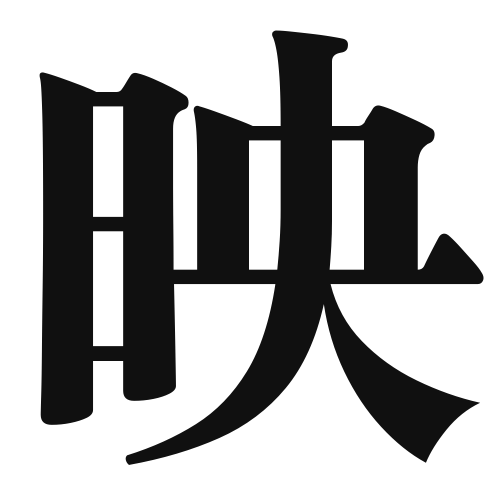1. Overview of Meaning
The kanji 映 (pronounced “ei”) primarily means “to reflect” or “to project.” It is often associated with images, shadows, and the act of mirroring something.
2. Formation and Radical
Formation of the Kanji: The kanji 映 is a phonetic-ideographic character (形声文字). It combines the meaning of “to reflect” with a phonetic component that suggests its pronunciation.
Radical: The radical for 映 is 水 (water), which is often associated with fluidity and reflection, as water reflects images.
3. Examples of Usage
Common Words and Phrases: Some frequently used words that include 映 are:
- 映像 (えいぞう, eizō) – “video” or “image”
- 映る (うつる, utsuru) – “to be reflected”
- 映画 (えいが, eiga) – “movie”
Example Sentences:
- この湖は美しい山を映しています。 (This lake reflects the beautiful mountains.)
- 彼は新しい映像を作りました。 (He created a new video.)
4. Synonyms and Antonyms
Similar Kanji: A kanji with a similar meaning is 影 (かげ, kage), which means “shadow.” While both involve reflection, 影 refers more to the shadow cast by an object rather than the image itself.
Antonyms: A kanji with an opposite meaning is 消 (けす, kesu), which means “to extinguish” or “to erase,” indicating the removal of an image or reflection.
5. Cultural and Historical Background
Relation to Japanese Culture: The concept of reflection is significant in Japanese culture, often symbolizing introspection and the beauty of nature. The art of 水墨画 (suibokuga), or ink wash painting, often captures reflections in water.
Proverbs and Idioms: One common saying is 映える (はえる, haeru), which means “to stand out” or “to shine,” often used to describe something that is visually striking or beautiful.
